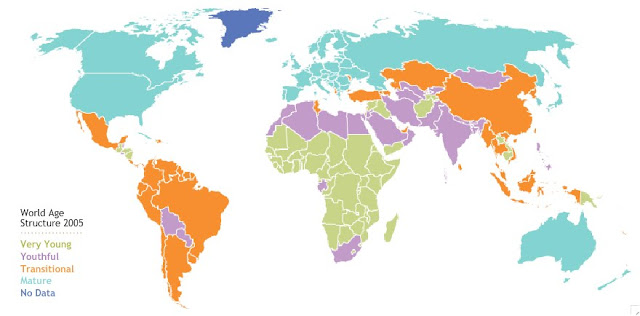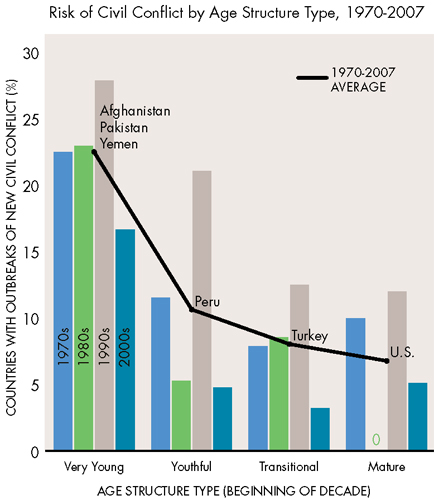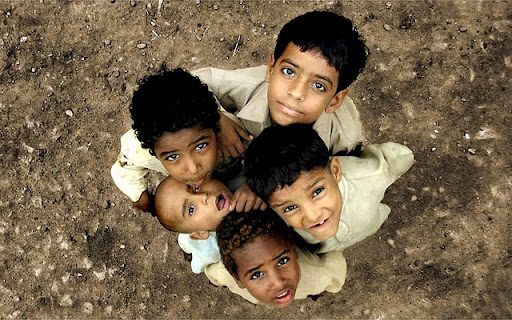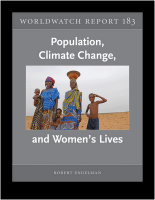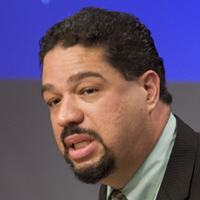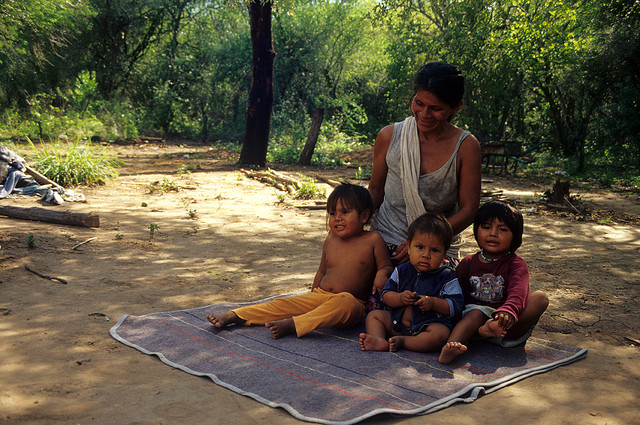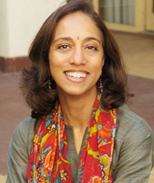-
Demographic Security Comes to the Hill
December 16, 2010 // By Hannah Marqusee“We are now in an unprecedented era of demographic divergence,” said Population Action International’s Elizabeth Leahy Madsen at a September briefing held by Congressman John Tierney’s Subcommittee on National Security and Foreign Affairs and Congressman Russ Carnahan’s Subcommittee on International Organizations, Human Rights and Oversight.MORE
Eighty percent of the world’s conflicts occur in places where 60 percent or more of the population is under 30, and 90 percent of countries with young populations have weak governments, said Chairman Tierney in his opening remarks. He said that while such demographic trends “appear to be issues for the future…it is important that we start this dialogue today, so that we can make steps to address [them].” ECSP Director Geoff Dabelko and the Stimson Center’s Richard Cincotta joined Madsen on the panel titled, “The Effects of Demographic Change on Global Security,” at the Capitol Visitor Center.
Youth Bulges and National Security
The countries of greatest security threat to the United States are also those with the youngest age structures and rapidly increasing populations, said Madsen. By next year, the world’s population will have reached seven billion, with 95 percent of that growth occurring in the developing world.
Large youthful populations can be a source of national strength because they provide innovation and manpower, said Dabelko, but without significant investment they may also contribute to state instability. When there are often few opportunities to obtain a job or an education for young people, there are low “opportunity costs” to joining a rebel group, said Madsen.
State instability can be affected by youth bulges, shifting religious or ethnic compositions, or food and water insecurity, but age-structural transitions are the strongest indicator of state performance, said Cincotta. Despite conventional wisdom, there is actually little evidence to link state failure with premature adult mortality due to AIDS or a high male-to-female ratio, he added.
It is not only developing countries with high fertility rates that face demographic difficulties, Cincotta noted. Countries such as Japan and Germany will soon have reached a “post-mature” age structure in which their aging populations and comparatively small workforces will tax state institutions and threaten economic stability.
Population Policies: Using “Soft Tools” to Improve National Security
Recently, leaders in the U.S. government have been paying increased attention to the linkages between demography and security through the “three Ds:” diplomacy, development, and defense. In 2008, the National Intelligence Council’s Global Trends 2025 included demographic assessments to analyze security trends, and this year, the National Security Strategy featured demographic trends along with the environment and other non-traditional areas.
Dabelko said that while this growing recognition signals progress, the “hard tools” of the traditional security community must be bolstered with “soft tools” commonly used by the international aid community, such as female empowerment, education, health services and youth employment.
Madsen argued that empowering the 215 million women with an unmet need for family planning worldwide through increased funding for voluntary family planning programs is a cost-effective way to shape population trends and ultimately reduce security threats.
“Demography is not destiny,” said Madsen. “Family planning has been an unsung signature of U.S. foreign assistance for decades.”
Similarly, Cincotta said that policies should help states transition out of youth bulges, and help countries with aging populations reform social institutions to protect older people.
Dabelko added that while progress has been made in acknowledging the linked nature of population trends and national security, there is significant room for improvement. Pointing to the successes of integrated population, health, and environment (PHE) programs, which provide environmental conservation and family planning services simultaneously, he called for similar programs to address population dynamics and conflict prevention. Long-term solutions call for coordinated resources and integrated strategies, he said.
Read the speakers’ full remarks: Chairman John F. Tierney, Richard Cincotta, Geoff Dabelko, and Elizabeth Leahy Madson (slides).
Sources: Guttmacher Institute, Population Action International, National Intelligence Council.
Image Credits: “World Age Structure 2005” and “Risk of Civil Conflict by Age Structure Type, 1970-2007,” courtesy of Population Action International. -
Friday Podcasts
Judith Bruce on Empowering Adolescent Girls in Post-Earthquake Haiti
MORE “The most striking thing about post-conflict and post-disaster environments is that what lurks there is also this extraordinary opportunity,” said Judith Bruce, a senior associate and policy analyst with the Population Council’s Poverty, Gender, and Youth program. Bruce has spent time this year working with the Haiti Adolescent Girls Network (HAGN), a coalition of humanitarian groups conducting workshops focused on the educational, health, and security needs of the country’s vulnerable female youth population.
“The most striking thing about post-conflict and post-disaster environments is that what lurks there is also this extraordinary opportunity,” said Judith Bruce, a senior associate and policy analyst with the Population Council’s Poverty, Gender, and Youth program. Bruce has spent time this year working with the Haiti Adolescent Girls Network (HAGN), a coalition of humanitarian groups conducting workshops focused on the educational, health, and security needs of the country’s vulnerable female youth population.
Gender-based violence has long been an issue in Haiti, but the problem became even more pronounced in the wake of the January earthquake. HAGN has sought to address the problem by concentrating its community-based programming on “high priority” groups, including girls who are disabled, serve as de facto heads of households, or are aged 10-14.
Bruce asserted that protecting and empowering young girls is critical because upon reaching puberty, “their access to a safe world shrinks dramatically.” With the post-disaster environment adding another layer of challenge, she said “there could be no ambiguity in anyone’s mind that we have to create dedicated spaces for girls who, at least for a few hours a week, feel secure to be themselves and to plan for their long-term safety as well as their development.”
The “Pop Audio” series is also available as podcasts on iTunes.Topics: demography, disaster relief, education, Friday Podcasts, gender, global health, Haiti, livelihoods, population, youth -
Whither the Demographic Arc of Instability?
December 14, 2010 // By Richard CincottaMORE
After the Berlin Wall came down in 1989, the demand for geostrategic mapping went up. Pentagon geographers revised maps almost monthly in order to keep pace with the rapid sequence of events – the toppling of Eastern Europe’s communist regimes, the rise of pro-Western liberal democracies in their place, and the reunification of Germany. Then came more borders, and even more maps: the breakup of the Soviet Union and the withdrawal of forces from former Warsaw-Pact states, the splintering of Yugoslavia and Czechoslovakia, and requests for accession to NATO. When, in the late 1990s, it became apparent that the end of the Cold War would have little effect on the emergence of civil and ethnic conflicts in Africa, Asia, and Latin America, and that a network of militant Islamist organizations had coalesced across Muslim Asia and Africa, strategic mapmaking shifted focus to identifying conditions in the Global South.
Topics: Africa, conflict, demography, development, economics, livelihoods, Middle East, military, population, security, South Asia, Yemen, youth -
The Number Left Out: Bringing Population Into the Climate Conversation
December 9, 2010 // By Wilson Center StaffMORE Numbers swirl around climate change.
Numbers swirl around climate change.
So many parts per million of greenhouse gases in the atmosphere. So many gigatons of carbon dioxide emitted. So many degrees Celsius of temperature rise that we hope won’t happen. Yet one number rarely comes into play when experts or negotiators talk about the changing atmosphere and the warming of the planet: the number of humans putting heat-trapping gases into the air.
The original version of this article, by Robert Engelman, appeared on the Worldwatch Institute’s Transforming Cultures blog.
The UK Met Office’s data set for September 2009 of more than 1,600,000 temperature readings from 1,700+ stations.
Numbers swirl around climate change.
So many parts per million of greenhouse gases in the atmosphere. So many gigatons of carbon dioxide emitted. So many degrees Celsius of temperature rise that we hope won’t happen. Yet one number rarely comes into play when experts or negotiators talk about the changing atmosphere and the warming of the planet: the number of humans putting heat-trapping gases into the air.
The relative silence isn’t hard to understand. Population is almost always awkward to talk about. It’s fraught with sensitivity about who has how many children and whether that is anyone else’s business. It’s freighted with sexuality, contraception, abortion, immigration, gender bias, and other buttons too hot to press into conversation. Yet two aspects of population’s connection to climate change cry out for greater attention – and conversation.
One is that population – especially its growth, but other changes as well – matters importantly to the future of climate change, a statement that as far as I can tell is not challenged scientifically. (The Intergovernmental Panel on Climate Change, for example, accepts the accuracy of the so-called Kaya identity, which names population among the four factors that determine emissions growth from decade to decade.) And, two, addressing population in climate-friendly ways is also fundamentally people-friendly, in that it involves no “population control,” but rather the giving up of control – especially control of women’s bodies by people other than themselves.
A new Worldwatch Institute report, which I authored, offers details, findings, and recommendations on both the importance of population in climate change and how to address it. The report looks at some of the history of the population-climate link – in particular, interesting work by William Ruddiman, who hypothesizes that the agricultural revolution contributed to global warming thousands of years ago. And it addresses the common objection that population growth can’t be that important in greenhouse gas emissions growth because countries with high per capita emissions tend to have smaller families than low-emitting countries.
Equity in per capita emissions, I argue, is an essential goal – and without it, no global effort to shrink emissions can succeed. The imperative of an equal sharing of atmospheric carbon space is among the most powerful arguments for a smaller world population. When greenhouse gases other than carbon dioxide – such as methane and “black carbon” – are considered, per capita emissions gaps are not as wide as many writers believe. And the amount of all these gases that equal emitters can contribute without altering the atmosphere shrinks in direct proportion to population’s growth.
Arguments about population’s role in climate change are unnecessarily heated, however. Even if the growth of human numbers played only a minor role in emissions growth, it would be worth discussing – not because addressing population will somehow resolve our climate predicament, but because ultimately no other strategy on its own will either. We need the widest possible range of strategies – economic, political, technological, and behavioral – that are both feasible and consistent with shared human values.
On population, the most effective way to slow growth is to support women’s aspirations. Almost all women aspire to gain an education, to stand in equality with men, and to make decisions for themselves – including whether and when to give birth. Policies and programs to help women achieve these aspirations exist in many places. But they don’t get the attention, support and funding they deserve. And they are rarely seen as climate-change strategies.
As societies, we have the ability to end the ongoing growth of human numbers – soon, and based on human rights and women’s intentions. This makes it easy to speak of women, population, and climate change in a single breath.
Robert Engelman is vice president for programs at the Worldwatch Institute and the author of “Population, Climate Change, and Women’s Lives.” Please contact him if you are interested in a copy of the report.
Sources: UK Met Office, World Resources Institute.
Image Credit: Adapted from “Met Office Climate Data – Month by Month (September),” courtesy of flickr user blprnt_van, and report cover, courtesy of the Worldwatch Institute. -
Guest Contributor
From Cancun: Getting a Climate Green Fund
Over 9,000 negotiators from 184 countries have gathered for the 16th Conference of the Parties of the UN Framework Convention on Climate Change (UNFCCC), known as COP-16, in Cancun, Mexico. No one expects a binding emissions reduction agreement, but a successful outcome on a set of decisions here – the so-called “balanced package” – will help build trust among countries and make progress towards a final emissions agreement next year.MORE
One of the most important parts of the package is agreement on the creation of a green climate fund – an international fund designed to help developing countries adapt to and mitigate the effects of climate change.
If the negotiations are as successful, as expected, the fund will be part of a package that also includes the architecture for an adaptation body, technology transfer, REDD-plus, and progress towards a binding international mitigation agreement that negotiators hope to conclude at COP-17 in Durban, South Africa.
An event Monday morning co-hosted by Oxfam and the Global Campaign for Climate Action, featured a variety of developed and developing country perspectives about what a new fund for mitigation and adaptation programs should look like.
The event was galvanized by a letter, currently being circulated here at the talks, signed by 215 civil society organizations and calling for “the establishment of a fair global climate fund at COP-16 that will meet the needs and interests and protect the rights of the most vulnerable communities and people around the world.” In opening comments and a question-and-answer session, panelists articulated some of the most contentious points that negotiators are currently discussing, some of the reasons why a green fund is so important, and the implications for global equity, sustainable development, and international security.
A main point under discussion right now is how the fund will be governed. The United States and other developed countries argue that the fund should work under the supervision of the UNFCCC but international financial institutions, like the World Bank, should also assist in creating the fund.
Judith McGregor, the UK ambassador to Mexico, argued in her opening statement that for the United Kingdom, “climate finance… is a clear, clear priority” at the COP, but that the World Bank would lend the fund legitimacy and make donors more confident in the fund’s ability to deliver. Tim Gore from Oxfam expressed the opinion held by many civil society organizations and delegates from developing countries, that the fund must “act under the authority of the UNFCCC… independent from institutions such as the World Bank,” because a new climate fund should have an equitable governance structure that includes the voices of developing countries, civil society members, indigenous peoples, women, and other stakeholders – not a majority share by the developed countries like at the World Bank.
Another stumbling block is how climate finance will be divided between adaptation and mitigation programs. Gore argued that adaptation and mitigation finance must be balanced 50-50, whereas currently “there is a huge adaptation gap… less than 10 percent of current climate finance is going to adaptation.” Evans Njewa, the lead finance negotiator representing the group of Least Developed Countries (LDCs), noted in his statement that “adaptation is the priority for the LDCs [in Cancun].”
The source of these funds is also a contentious issue that divides developed and developing countries. Under the Copenhagen Accord, most of the COP country parties agreed that developed countries would mobilize $30 billion in fast start finance by 2012 and $100 billion per year by 2020 in climate finance from public, private, and other “innovative sources,” such as a carbon tax or cap-and-trade systems. Developed countries like the United States are mobilizing public funds for climate finance but argue that the majority of the $100 billion figure should be provided by private investments and that loans provided by development institutions as well as grants should also count.
Climate finance for adaptation will help make poor, rural communities in particular more resilient to the effects of climate change, including drought, floods and tropical storms, and therefore help the international community to achieve several related development milestones such as the Millennium Development Goals, according to Alzinda Abrea, finance minister of Mozambique.
Cate Owen of the Women’s Environment and Development Organization (WEDO) explained that investing in climate adaptation now “makes good sense” because “investing now in responding to climate change will lessen the long-term costs” to developed country donors.
The message that climate adaptation measures are becoming essential to sustainable development was perhaps delivered most forcefully by Florina Lopez, an indigenous person from Panama, who described the impacts that her people are already suffering as a result of climate change. Since her community survives by fishing, hunting and growing crops, severe flooding is disrupting indigenous ways of life and floods bring assaults on community health, like diarrhea, skin disease, and malnutrition. Community activities that contribute to development such as education and healthcare are also paralyzed by these impacts. Adaptation funding will be essential for her community to survive and to avoid disruptive displacement.
Still, perhaps the most compelling political reason for American taxpayers to invest in climate change adaptation in the developing world is the national security implications of the effects of climate change. A report issued this week by the Center for American Progress and the Alliance for Climate Protection explains why the United States must have a global climate investment strategy, despite adverse economic and political conditions domestically. Adaptation funding will “reduce risks of climate-related national security threats, including from severe floods or droughts in Pakistan and the Middle East” and strengthen our relationships with developing country recipients, including strategically important partners like India, Indonesia, and Brazil, write the authors. Finally, by managing displacement, migration, and violent conflict driven by the effects of climate change, such as water scarcity, climate change adaptation can help bolster international security and stability.
The establishment of a climate green fund here in Cancun is essential for an equitable and balanced international climate deal. A fund is first and foremost the moral imperative of developed countries, known as the Annex-I parties under the UNFCCC, who are historically responsible for greenhouse gas emissions. However, developed countries need not rely on the moral argument to convince policymakers and taxpayers that climate adaptation for the poorest and most vulnerable countries and people is a good investment.
Within the UN process itself, a robust, well-run, equitable green fund would help rebuild the trust lost between developed and developing countries at Copenhagen last year. In Gore’s words, Oxfam is “cautiously optimistic that we can get an agreement here in Cancun that rebuilds trust between rich and poor countries.”
Alex Stark is a program assistant at the Friends Committee on National Legislation, working on the Peaceful Prevention of Deadly Conflict Program. She is attending the Cancun negotiations as part of the Adopt a Negotiator team.
Sources: Alliance for Climate Protection, British Foreign and Commonwealth Office, Center for American Progress, Global Campaign for Climate, Mozambique Ministry of Planning and Finance, Oxfam, UN Framework Convention on Climate Change, Women’s Environment and Development Organization.
Photo Credit: “Will you back a climate fund?,” courtesy of flickr user Oxfam International. -
Friday Podcasts
From Cancun: Roger-Mark De Souza on Women and Integrated Climate Adaptation Strategies
MORE “When you look at the negative impacts of climate change, the impacts on the poor and the vulnerable – particularly women – increase, so investing in programs that put women at the center is critical,” said Roger-Mark De Souza, vice president of research and director of the climate program at Population Action International (PAI), speaking to ECSP from the UN Climate Change Conference in Cancun, Mexico. “There are a number of missed opportunities here in Cancun and in climate change deliberations overall that are not including women and are missing an opportunity to have a bigger bang for the buck, or power for the peso, as we say in Mexico.”
“When you look at the negative impacts of climate change, the impacts on the poor and the vulnerable – particularly women – increase, so investing in programs that put women at the center is critical,” said Roger-Mark De Souza, vice president of research and director of the climate program at Population Action International (PAI), speaking to ECSP from the UN Climate Change Conference in Cancun, Mexico. “There are a number of missed opportunities here in Cancun and in climate change deliberations overall that are not including women and are missing an opportunity to have a bigger bang for the buck, or power for the peso, as we say in Mexico.”
PAI hosted a side session with five panelists from Denmark, Ethiopia, Kenya, Suriname, and Uganda on “Healthy Women, Healthy Planet: Women’s Empowerment, Family Planning, and Resilience.” The session attracted more than 100 attendees and prompted incisive, informative questions, said De Souza.
“There was a call for additional research that is policy relevant that identifies some of the key entry points and added benefits at a country level,” said De Souza. “And there is a very strong call for youth partnerships from a number of youth advocates who are looking at medical and public health interventions and are desirous of including reproductive health programming as part of that.”
“One concrete next step for Cancun is to work with other civil society partners who are here who are tracking how gender is being integrated into the negotiating language, particularly with regard to financing mechanisms,” De Souza said.
Besides financing and the need for more research, De Souza said the key issues that emerged from the panel were: the importance of linking programs of different scales; ensuring women’s empowerment and ownership; and recognizing and replicating effective partnerships.
For more from Roger-Mark De Souza, see ECSP Focus Issue 19, “The Integration Imperative: How to Improve Development Programs by Linking Population, Health, and Environment.”
The “Pop Audio” series is also available as podcasts on iTunes. -
Friday Podcasts
Robert Walker on Family Planning Promotion and Global Population Growth
MORE “Expanding voluntary family planning access and ensuring that all women have access to reproductive health services is, to me at least, a no brainer,” said the Population Institute’s Robert Walker in this interview with ECSP. “I think it’s a win for women, for their health, for their welfare, the welfare of their families, for their communities, for the environment, and for the planet at large.”
“Expanding voluntary family planning access and ensuring that all women have access to reproductive health services is, to me at least, a no brainer,” said the Population Institute’s Robert Walker in this interview with ECSP. “I think it’s a win for women, for their health, for their welfare, the welfare of their families, for their communities, for the environment, and for the planet at large.”
While China and India dominate much of the global headlines about population growth, other parts of South Asia – namely Afghanistan and Pakistan – and sub-Saharan Africa receive comparatively little attention. For Walker, a renewed global effort to boost the quality and quantity of reproductive healthcare tools and services in these areas of the developing world is essential.
“This is very, very doable. We face a lot of really incredible challenges in the world today, particularly with respect to food, energy, water, and poverty. But if we can increase what we spend on international family planning assistance by three or four billion dollars a year, we can literally change the world,” Walker said. “And I think we desperately need to.”
The “Pop Audio” series is also available as podcasts on iTunes. -
Guest Contributor
What’s Good for Women Is Good for the Planet
MOREAmmi, my mother-in-law, was 16 years old when her marriage was arranged. Before she was 18, she had borne her first child, who died within the year, and by 30, she had given birth to six more. She had a fourth-grade education, and like other women in the new state of Pakistan, she knew little about contraceptive choices.
More than 50 years later, contraception still remains inaccessible for millions of women in Pakistan, such as Rani, the young woman who cleans Ammi’s Karachi home. Illiterate and married off to a cousin at age 15, Rani already has three children, and, like the majority of married Pakistani women who have never used modern contraception, will most likely have at least one more.Giving women the ability to determine whether and when to become pregnant is fundamental to the realization of their basic human rights. It is also a proven health and development strategy, substantially reducing maternal and infant mortality by allowing women to space their pregnancies. And now, for the first time, two studies offer compelling evidence that it has another benefit: What is good for women is also good for our planet.
These groundbreaking studies have rigorously quantified the effect on the environment of helping women and girls control their reproductive destinies. The studies – “The World Population Prospects and Unmet Need for Family Planning,” by the Futures Group, and, “Global Demographic Trends and Future Carbon Emissions,” by the National Center for Atmospheric Research and the International Institute for Applied Systems Analysis – demonstrate that giving women and girls access to contraception offers a precious co-benefit: a substantial reduction in carbon emissions.
The logic is simple: When women have the power to plan their families, populations grow more slowly, as do greenhouse gas emissions. The cost of providing these needed family planning services worldwide is minimal compared with other development and emissions reductions strategies – roughly $3.7 billion per year.
More than 200 million women in the United States and developing countries are sexually active and do not want to become pregnant, yet are not using modern contraception. The results are staggering: One in four births worldwide is unplanned, leading to 42 million abortions each year (half of them clandestine) and 68,000 women’s deaths.
Moreover, the large number of women who become pregnant when they do not want to is a significant source of population growth. Read in tandem, the studies show that a reduction of 8-15 percent of essential carbon emissions can be obtained simply by providing modern contraception to all women who want it. This reduction would be equivalent to stopping all deforestation or increasing the world’s use of wind power 40-fold. Although this is just one piece of the emissions reduction puzzle, it is a substantial piece.
The world is now facing multi-layered challenges of economic distress, rising inequality, and environmental devastation caused by climate change. International climate negotiations have repeatedly stalled as powerful nations play the blame game and block progress. Meanwhile, a series of severe weather events has buffeted the earth from Moscow to Iowa to Pakistan, each one hitting women and children hardest. This is the reality that rich nations must reckon with – and commit to changing – today.
In my 14 years at the Global Fund for Women, I have observed the wave of change that comes from empowering women – what some call the “girl effect.” Making information, education, and contraception easily available offers us an affordable, no-regrets strategy that can be implemented now.
Meeting the need for family planning services is not a complex challenge. We know how to provide the commodities, services, and education that women and their families want. There are thousands of programs around the world with successful track records in every conceivable religious, cultural, and political setting.
Investing in family planning has already been proven as an essential strategy to ensure the health, safety, and development of societies. Now we know that it is also an effective way to safely steward Mother Earth through one of her most challenging crises.
Kavita N. Ramdas is chair of the Expert Working Group of the Aspen Institute’s Global Leaders Council for Reproductive Health and senior adviser and former president and CEO of the Global Fund for Women.
Sources: Futures Group, National Center for Atmospheric Research and the International Institute for Applied Systems, Science, UNFPA, WHO.
Photo Credit: “Chaco: Madre pilagá,” courtesy of flickr user Ostrosky Photos, and Kavita Ramdas, courtesy of Global Fund for Women.
 A Publication of the Stimson Center.
A Publication of the Stimson Center.

